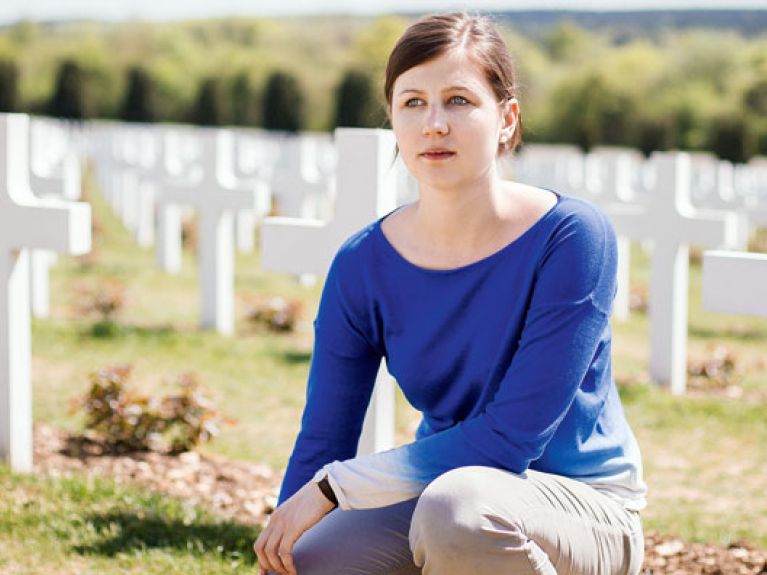A question of responsibility
Franziska Gehann is spending a year as a volunteer in Verdun, symbol of the First World War.

“Today, the area surrounding Verdun is very green. If you don’t know this was a battlefield in the First World War, it just looks like a landscape of hilly meadows and woods. It was a cratered moonscape after the war, scarred with shell holes and lines of trenches. I’ve been here for almost a year. I’m working with an organisation for peace and human rights, the Centre Mondial de la Paix, and one of my tasks is to accompany school groups from Germany. The young people are usually deeply moved by the battlefields and the huge cemeteries with many wreaths. The graves are marked with white crosses for the French and black ones for the Germans.
When I tell them about my voluntary service, the French people are often surprised. They say: ‘But that has nothing at all to do with your generation – why are you doing this?’ I tell them that, although we young Germans have no obligation, we do have a responsibility, and that Franco-German friendship isn’t something to be taken for granted. When the name of a German was to be engraved for the first time at the Douaumont Ossuary, a memorial containing the remains of soldiers, it caused a lot of discussion. Most families in France have deep-seated emotional ties with Verdun. During the war the French substituted their troops more often than the Germans, about every two weeks. That’s why the majority of French soldiers were here at least once.
Today, Verdun has around 20,000 inhabitants. The city has never regained the size it had before the First World War. I have to admit that I knew very little about the area before I came here. But gradually I learned about the huge effects the war had on the whole region. Bones are still being discovered, and people are still banned from entering certain areas, because of the unexploded shells.”
FRANZISKA GEHANN // VERDUN
A volunteer with Action Reconciliation Service for Peace (ARSP), 19-year-old Franziska from Baden-Württemberg is spending a year in Verdun and supporting the work of the Centre Mondial de la Paix, des Libertés et des Droits de l’Homme. It is a meeting, information and education centre on topics extending beyond the First World War. For instance, Franziska Gehann was responsible for setting up a small piece of the Berlin Wall in the garden for visitors to see. The museum is showing a special exhibition marking the 100th anniversary of the First World War, “The Great War”. In the Battle of Verdun in 1916 alone, it is estimated that around 700,000 soldiers were killed, wounded or went missing. Franziska is pictured at the Douaumont Ossuary memorial.
Text: Clara Görtz, Helen Sibum; photograph: Jonas Ratermann
